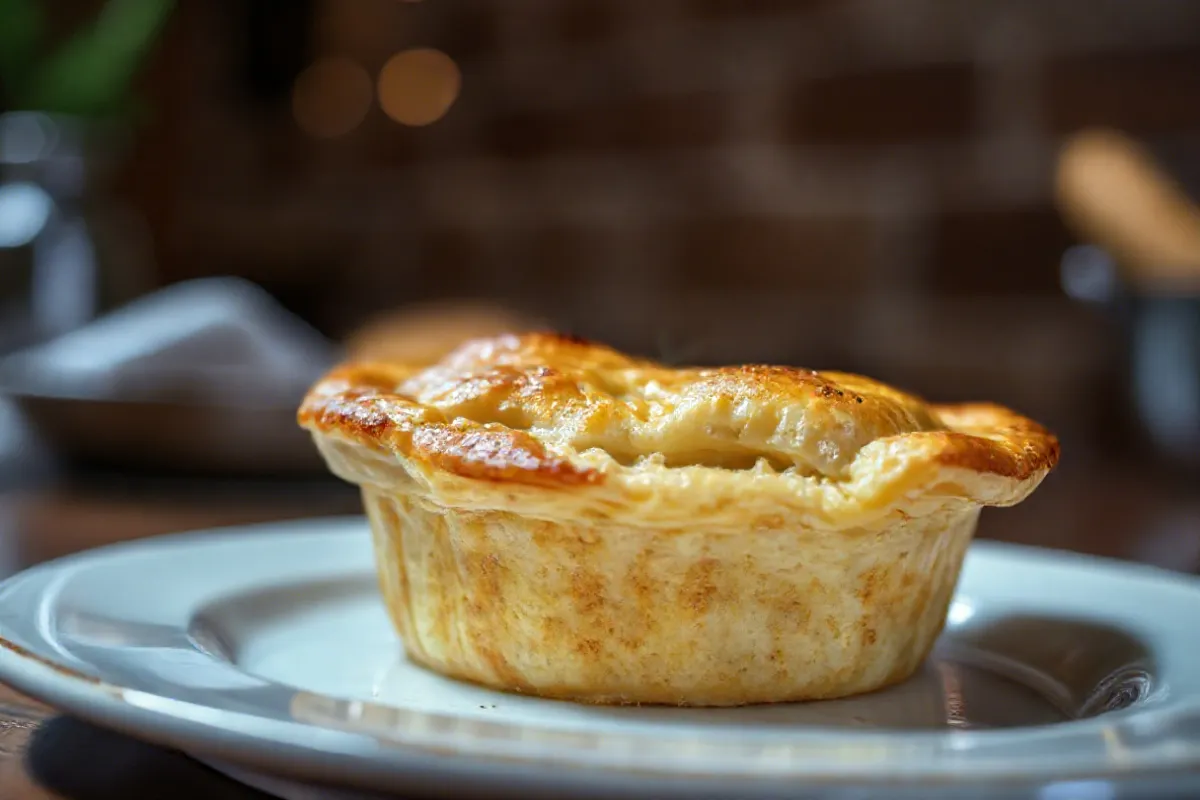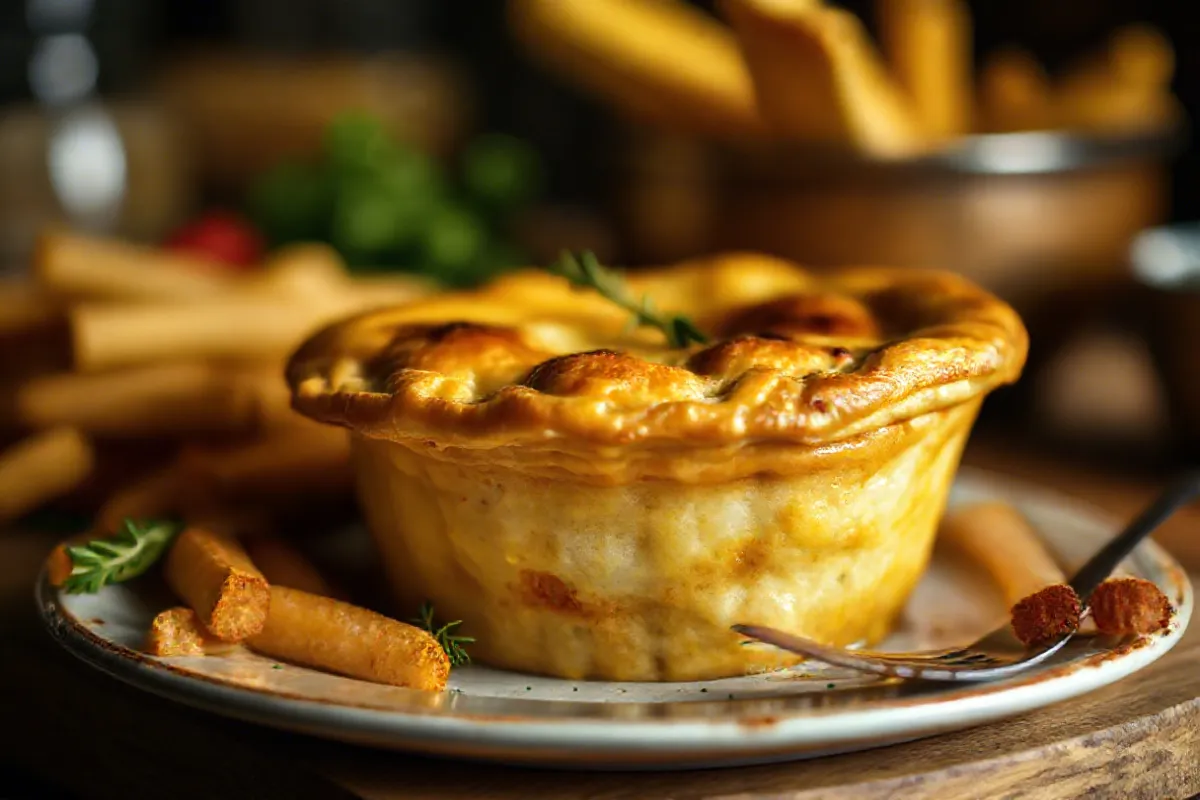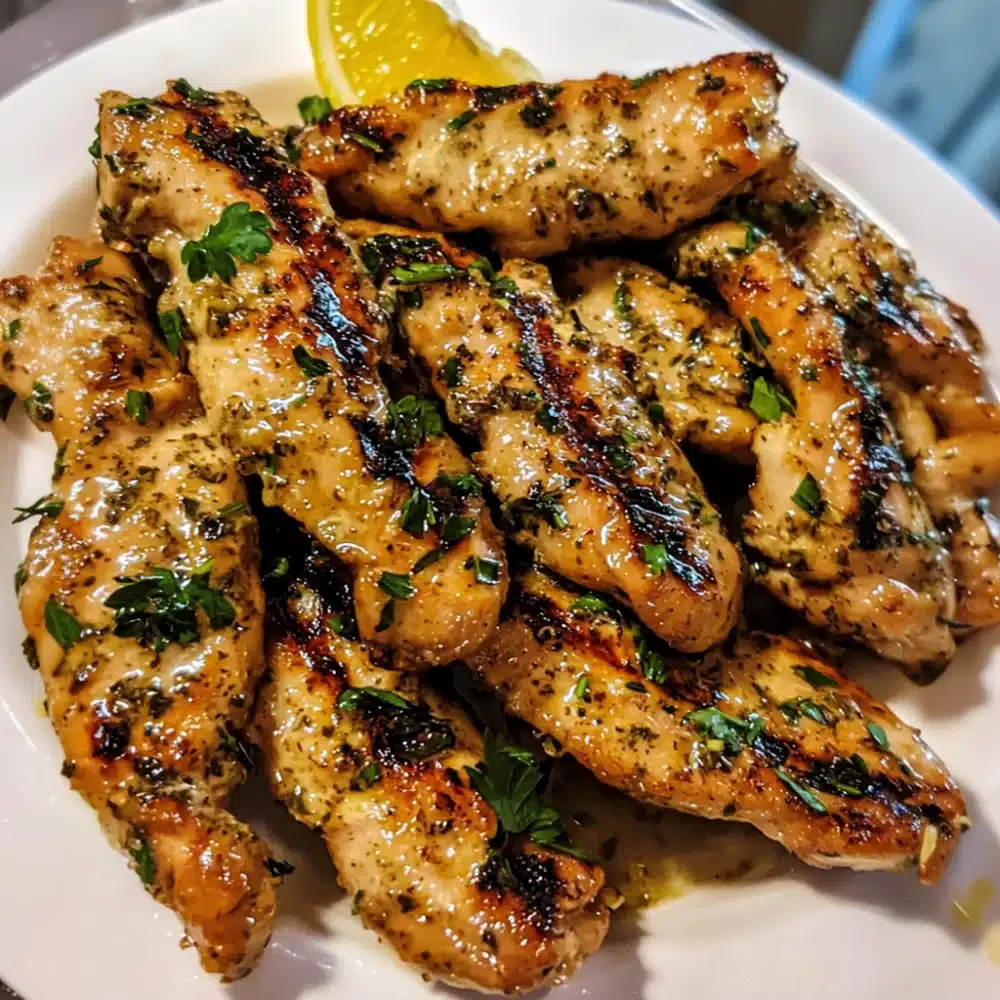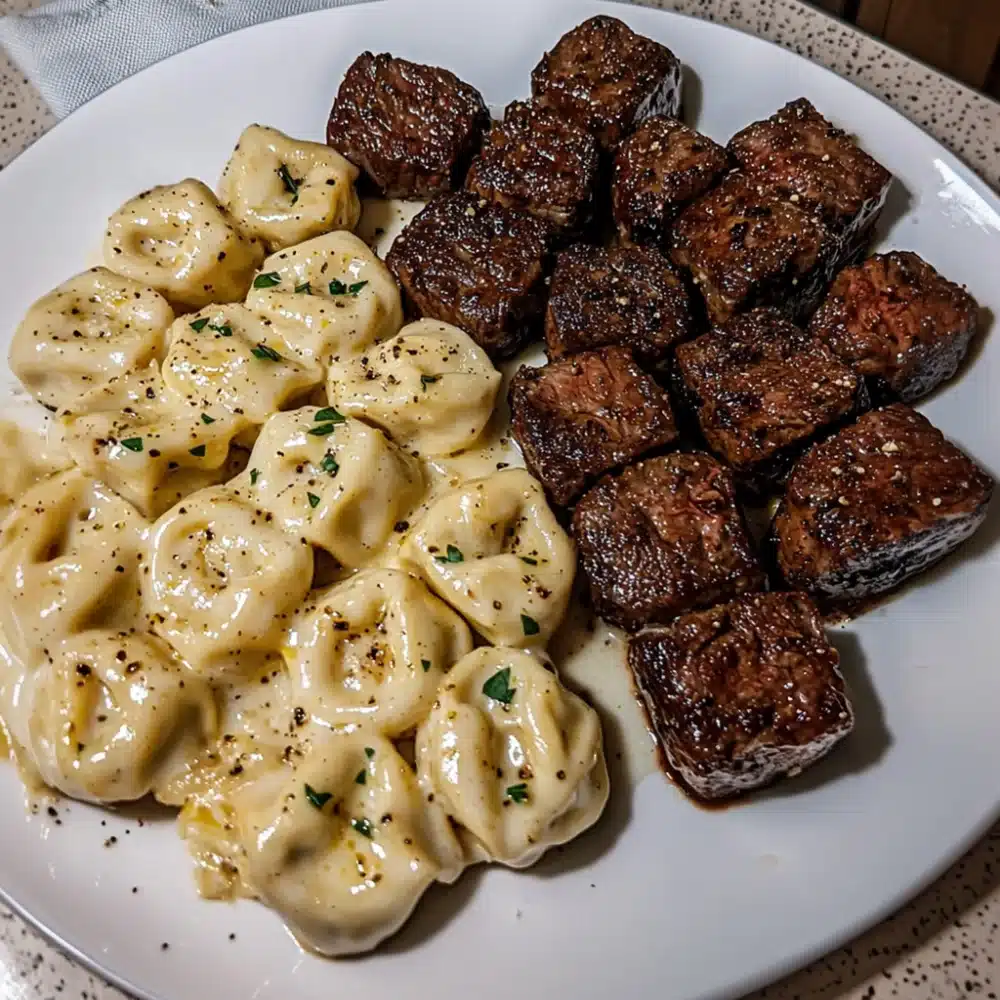Gluten-Free Chicken Pot Pie is more than just a meal—it’s a warm, comforting embrace that can satisfy both your hunger and your soul. For those who follow a gluten-free diet, finding a recipe that doesn’t compromise on taste or texture can be challenging. But with the right ingredients and techniques, you can enjoy a flaky, savory pot pie that rivals any traditional version.
In this comprehensive guide, we’ll delve into what makes a chicken pot pie gluten-free, explore essential ingredients and preparation tips, and offer variations to suit different tastes and dietary needs. By the end of this article, you’ll have everything you need to create a delicious, homemade gluten-free chicken pot pie that will become a staple in your kitchen.
What Makes a Chicken Pot Pie Gluten-Free?
Gluten-free cooking has become increasingly popular as more people recognize the need to avoid gluten due to allergies, intolerances, or celiac disease. Gluten is a protein found in wheat, barley, and rye, and it gives dough its elasticity and structure. For those with gluten sensitivities, consuming gluten can lead to a range of symptoms, from digestive discomfort to more severe health issues.
To make a chicken pot pie gluten-free, the key is to substitute traditional ingredients that contain gluten with suitable alternatives. This means using a gluten-free pie crust and ensuring that all the other ingredients, such as broth, flour, and seasonings, are free from gluten.
Key Gluten-Free Ingredients
- Gluten-Free Flour: Instead of all-purpose flour, use a gluten-free flour blend that typically includes rice flour, potato starch, and tapioca flour. These blends are designed to mimic the properties of wheat flour, ensuring a similar texture in your crust.
- Gluten-Free Pie Crust: You can either make your own gluten-free pie crust from scratch or purchase a pre-made one. If you’re interested in making your own, learn how to make the perfect gluten-free pie crust.
- Gluten-Free Chicken Broth: Many store-bought broths contain gluten as a thickener or flavor enhancer. Always check labels to ensure the broth you use is certified gluten-free.

Essential Ingredients for Gluten-Free Chicken Pot Pie
Before you start cooking, gather the following ingredients:
For the Crust
- Gluten-Free Flour Blend (2 cups)
- Cold Butter (1 cup, cut into small cubes)
- Salt (1 tsp)
- Xanthan Gum (1 tsp, if not included in the flour blend)
- Cold Milk (4-6 tbsp, or dairy-free milk if preferred)
For the Filling
- Chicken Breasts (2 large, cooked and shredded)
- Carrots (2, chopped)
- Onion (1 medium, chopped)
- Frozen Peas (1 cup)
- Gluten-Free Chicken Broth (2 cups)
- Milk (1 cup, or dairy-free alternative)
- Gluten-Free Flour (1/4 cup, for thickening)
- Butter (1/4 cup, or dairy-free substitute)
- Salt and Pepper (to taste)
Substitutions and Dietary Adjustments
- Dairy-Free Option: Substitute butter with a dairy-free spread and use almond or soy milk instead of regular milk.
- Vegetarian Version: Replace chicken with a mix of hearty vegetables like mushrooms, potatoes, and lentils, and use vegetable broth instead of chicken broth.
- Lower Carb: Consider using almond flour for the crust and adding more vegetables to the filling for a lower-carb version.
Step-by-Step Guide to Making Gluten-Free Chicken Pot Pie
1. Preparing the Gluten-Free Crust
A good crust is the foundation of any chicken pot pie. For a flaky and buttery gluten-free crust, follow these steps:
- Mix the Dry Ingredients: In a large bowl, combine the gluten-free flour, salt, and xanthan gum (if your flour blend doesn’t include it).
- Incorporate the Butter: Add the cold butter cubes to the flour mixture. Work the butter into the flour with your hands or a pastry cutter until the mixture resembles coarse crumbs.
- Add the Milk: Gradually add cold milk, one tablespoon at a time, mixing gently until the dough starts to come together. The dough should be moist but not sticky.
- Chill the Dough: Form the dough into a ball, wrap it in plastic wrap, and refrigerate for at least 30 minutes. This produces a flakier crust by helping the butter firm up.
2. Preparing the Filling
While the dough is chilling, prepare the filling:
- Cook the Vegetables: In a large saucepan, melt the butter over medium heat. Add the chopped onions and carrots, cooking until they are softened (about 5 minutes).
- Add the Chicken and Peas: Stir in the shredded chicken and frozen peas. Cook for another 3-4 minutes until heated through.
- Thicken the Sauce: Sprinkle the gluten-free flour over the mixture and stir well. Milk and chicken broth should be added gradually, stirring continuously to prevent lumps. Simmer the sauce until it becomes thick and reaches the spoon’s back. Season with salt and pepper to taste.
- Set Aside: Remove the filling from the heat and let it cool slightly while you prepare the crust.
3. Assembling the Gluten-Free Chicken Pot Pie
Now that the filling and crust are ready, it’s time to assemble your pie:
- Roll Out the Dough: On a lightly floured surface (use gluten-free flour), roll out the dough to fit your pie pan. Gently push the dough into the corners of the pan after transferring it with care.
- Add the Filling: Pour the chicken and vegetable filling into the crust, spreading it out evenly.
- Top with More Dough: Roll out the remaining dough and place it over the filling. Cut off any excess dough and crimp the edges of the pie to seal it. Cut a few tiny holes in the top crust to let the steam out that has been trapped.
- Preheat your oven to 425°F (220°C) in order to bake the pie for 30-35 minutes, or until the crust is golden brown and the filling is bubbly.
4. Serving the Gluten-Free Chicken Pot Pie
Once baked, let the pie cool for about 15 minutes before serving. This allows the filling to set slightly, making it easier to slice. For a complete meal, serve with steamed veggies or a side salad.
Choosing the Right Gluten-Free Crust
The crust is often what makes or breaks a pie, and when it comes to gluten-free versions, getting the right texture can be challenging. Here are some tips to help you achieve the perfect gluten-free crust:
Homemade vs. Store-Bought Crust
- Homemade Crust: Making your own gluten-free crust allows you to control the ingredients and customize the flavor and texture. It’s worth the effort if you want a truly flaky, buttery crust.
- Store-Bought Crust: If you’re short on time or not confident in your baking skills, there are several good store-bought options available. Look for brands that use quality ingredients and have a texture that suits your preferences.
Tips for a Flaky Gluten-Free Crust
- Keep the Ingredients Cold: Cold butter and cold milk are essential for creating a flaky crust. Warm ingredients can cause the dough to become too soft and sticky.
- Don’t Overwork the Dough: Overworking the dough can lead to a tough crust. Mix the ingredients just until they come together, and handle the dough as little as possible.
- Use a Pastry Cutter: A pastry cutter helps distribute the butter evenly throughout the flour without melting it, leading to a more uniform texture.
Variations of Gluten-Free Chicken Pot Pie
One of the great things about chicken pot pie is its versatility. Here are some variations to consider:
Using Different Types of Meat
- Turkey: For a twist on the classic, try using turkey instead of chicken. This is a great option for using up Thanksgiving leftovers. Discover another great gluten-free pot pie recipe.
- Beef: Substitute chicken with cooked, shredded beef for a heartier, more robust flavor.
- Vegetarian: Skip the meat altogether and load up on your favorite vegetables. Mushrooms, potatoes, and lentils make for a filling and satisfying vegetarian pot pie.
Incorporating Other Vegetables or Ingredients
- Seasonal Vegetables: Take advantage of seasonal produce by adding vegetables like butternut squash, zucchini, or spinach to the filling.
- Herbs and Spices: Enhance the flavor of your filling by adding fresh herbs like thyme, rosemary, or parsley. A pinch of nutmeg or cayenne pepper can also add depth to the dish.
- Alternative Flours: If you’re experimenting with different types of gluten-free flours, consider using almond flour or coconut flour for a unique twist on the crust.
Making the Dish Dairy-Free or Low-Carb
- Dairy-Free: Use a dairy-free butter substitute and almond or soy milk in both the crust and the filling.
- Low-Carb: To reduce the carb content, use almond flour or another low-carb flour for the crust. Increase the amount of low-carb vegetables like zucchini and mushrooms in the filling.
How to Serve Gluten-Free Chicken Pot Pie
The way you serve your gluten-free chicken pot pie can elevate the meal and make it even more enjoyable.
Serving Suggestions
- With a Side Salad: A fresh green salad with a light vinaigrette provides a nice contrast to the rich, savory flavors of the pot pie.
- Roasted Vegetables: Serve your pot pie with a side of roasted vegetables like Brussels sprouts, carrots, or asparagus for a complete and balanced meal.
- Gluten-Free Bread: Pair the pot pie with slices of gluten-free bread or rolls to soak up any leftover gravy.
Pairing with Gluten-Free Side Dishes
- Gluten-Free Cornbread: The slightly sweet flavor of cornbread pairs beautifully with the savory filling of the pot pie.
- Quinoa Salad: A light quinoa salad with fresh vegetables and herbs is a great way to add some texture and freshness to the meal.
- Mashed Potatoes: For an extra hearty meal, serve the pot pie with a side of creamy mashed potatoes.
Presentation Tips
- Individual Pies: For a fun and personalized touch, consider making individual pot pies in ramekins or small pie dishes.
- Garnish with Herbs: A sprinkle of fresh parsley or thyme adds color and a burst of fresh flavor to each slice.
- Serve Warm: Always serve the pot pie warm, ideally fresh out of the oven, to ensure the crust is crispy and the filling is hot.
Tips for Perfecting Your Gluten-Free Chicken Pot Pie
Achieving the perfect gluten-free chicken pot pie can take some practice, but with these tips, you’ll be well on your way:
Working with Gluten-Free Dough
- Flour Your Surface: When rolling out gluten-free dough, be sure to dust your surface and rolling pin with gluten-free flour to prevent sticking.
- Chill the Dough: If the dough becomes too soft to work with, pop it in the fridge for a few minutes to firm up.
- Patchwork Crust: If your dough tears while transferring it to the pie dish, don’t worry. Simply patch it up by pressing the dough together with your fingers.
Ensuring a Thick and Flavorful Filling
- Cook the Vegetables Properly: Be sure to cook your vegetables until they are just tender before adding them to the filling. Overcooked vegetables can become mushy, while undercooked ones can be too crunchy.
- Use the Right Flour for Thickening: Gluten-free flour blends or cornstarch work well for thickening the filling. Add the flour gradually to avoid lumps, and cook the mixture until it reaches the desired thickness.
Enhancing the Flavor
- Fresh Herbs: Fresh herbs like thyme, rosemary, and parsley add a vibrant flavor to the filling. In order to maintain their fresh flavor, add them at the end of cooking.
- Season Generously: Don’t be afraid to season your filling with salt, pepper, and other spices to enhance the overall flavor. A pinch of cayenne pepper can add a subtle heat that complements the richness of the dish.
Storage and Reheating Your Gluten-Free Chicken Pot Pie
One of the great things about chicken pot pie is that it stores and reheats well, making it an ideal dish for meal prep or leftovers.
Storing Leftovers
- Refrigeration: Store any leftover pot pie in an airtight container in the refrigerator for up to 3-4 days. Be sure to let the pie cool completely before storing to prevent condensation from making the crust soggy.
- Freezing: To freeze, wrap the entire pie (or individual slices) tightly in plastic wrap and then in aluminum foil. Freeze for up to 3 months.
Reheating Tips
- Oven Reheating: For best results, reheat the pot pie in a preheated oven at 350°F (175°C) for 20-25 minutes, or until heated through. This method helps maintain the crust’s crispiness.
- Microwave Reheating: You can use the microwave to quickly reheat individual slices if you’re in a rush. Place the slice on a microwave-safe plate and heat on medium power for 2-3 minutes. Remember that the crust might not be as crunchy.
Freezing and Reheating the Entire Dish
If you plan to freeze the entire pot pie, consider using a disposable pie dish or lining your pie pan with parchment paper for easy removal. When ready to reheat, you can bake the frozen pie directly in the oven, adding an extra 20-30 minutes to the baking time.
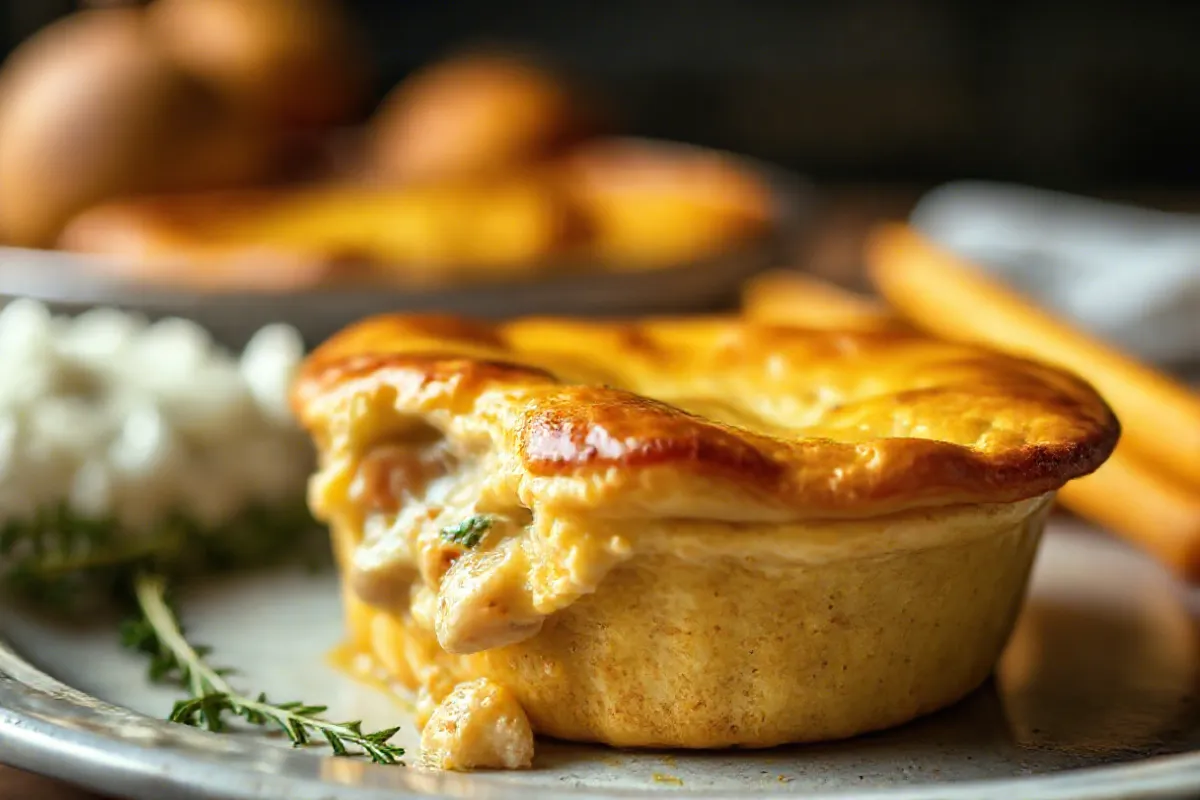
Frequently Asked Questions (FAQs) about Gluten-Free Chicken Pot Pie
Can I Freeze Gluten-Free Chicken Pot Pie?
Yes, gluten-free chicken pot pie freezes very well. You can either freeze the entire pie before baking it or freeze individual slices after baking. Just be aware that the crust may be slightly softer after freezing and reheating. For best results, try this freezing method.
Is Chicken Gluten-Free?
Chicken in its natural form is gluten-free. However, be cautious when purchasing processed chicken, as some products may contain gluten due to added fillers or flavorings. Always check the labels to ensure the chicken you use is gluten-free.
What’s the Best Way to Thicken the Filling?
The best way to thicken the filling is by using a gluten-free flour blend or cornstarch. Add the flour gradually to the hot broth and milk mixture while stirring constantly to avoid lumps. Cook the mixture until it reaches the desired thickness.
Can I Make One Large Gluten-Free Chicken Pot Pie Instead of Small Ones?
Absolutely! While individual pot pies are a fun option, you can easily make one large pie. Use a 9- or 10-inch pie pan and follow the same instructions for rolling out the dough and assembling the pie. The baking time may need to be adjusted slightly, so keep an eye on the crust to ensure it doesn’t overbake.
How Do I Prevent My Gluten-Free Crust from Crumbling?
Gluten-free dough can be more fragile than traditional dough, but you can prevent crumbling by following these tips:
- Chill the Dough: Chilling the dough before rolling it out helps keep it firm and easier to handle.
- Use Xanthan Gum: If your flour blend doesn’t contain xanthan gum, be sure to add it to the dough. It helps to improve the texture and serves as a binding agent.
- Handle Gently: When transferring the dough to the pie pan, handle it gently and avoid overworking it.
Conclusion and Final Thoughts on Gluten-Free Chicken Pot Pie
Creating a gluten-free chicken pot pie that is both delicious and satisfying doesn’t have to be a challenge. With the right ingredients and techniques, you can enjoy a comforting, homemade pot pie that meets your dietary needs without sacrificing flavor or texture.
Whether you’re making it for a family dinner, meal prep, or a special occasion, this gluten-free chicken pot pie is sure to impress. The versatility of the recipe allows you to customize it to suit your tastes, and the tips provided will help you achieve the perfect crust and filling every time.
So why not give it a try? Share this recipe with friends and family, experiment with different variations, and enjoy the comfort of a homemade gluten-free chicken pot pie.
